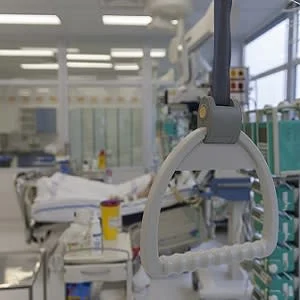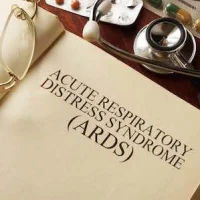Surgically opening the windpipe, or trachea, within the first seven days of the start of mechanical ventilation decreases the time patients spend on ventilators, shortens their ICU stay and lowers their risk of ventilator-associated pneumonia, according to a new systematic review.
"We analysed the existing medical literature to unravel a question that is very pertinent to adult critical care," said senior author Alvaro Moreira, MD, MSc, of The University of Texas Health Science Center at San Antonio (UT Health San Antonio). "At what point should surgeons open the trachea in critical care patients to most benefit them?"
The surgery, called tracheotomy, is performed either in the operating room or at the bedside, depending on patient risk factors. The team analysed 17 studies that included more than 3,000 patients. The systematic review compared early versus late tracheotomy, with "early" defined as being performed seven days or shorter after initiation of ventilation and "late" defined as eight days or longer, including patients who never required a tracheotomy.
Early tracheotomy was associated with improvement in three major clinical outcomes: ventilator-associated pneumonia (40% reduction in risk), ventilator-free days (1.7 additional days off the ventilator, on average) and ICU stay (6.3 days shorter time in unit, on average). Doing the procedure early did not impact patient mortality, however.
Patients receiving mechanical ventilation are intubated and breathe through a tube extending down into their windpipe. After 48 hours of intubation, patients in critical care units are at higher risk to develop ventilator-associated pneumonia, Dr. Moreira said.
A tracheostomy is placed for patient comfort, to wean the patient off sedatives and to increase the speed with which the patient can come off the ventilator.
"One of the hesitations for families is that their critically ill loved one is undergoing an intervention," Dr. Moreira said. "But if the patient were to develop pneumonia, that would increase their hospital stay and, in some patients, could be deadly.
"It's therefore a fine balance that providers and families need to consider when evaluating whether a patient is a good candidate for the intervention."
Implications for pandemic
Although no patients in the study were COVID-positive, the findings have potential translation to hospital critical care during the pandemic.
In March 2020, a committee of the American Academy of Otolaryngology-Head & Neck Surgery advised health care workers to "avoid performing tracheotomy in COVID-19 positive or suspected patients during periods of respiratory instability or heightened ventilator dependence." The committee said tracheotomy could be considered "in patients with stable pulmonary status but should not take place sooner than two to three weeks from the time of intubation and, preferably, with negative COVID-19 testing."
Since that time, studies have demonstrated that tracheotomy can be safely done in a negative pressure room, with proper personal protective equipment, sedation of the patient and frequent suctioning of the site.
"When investigators followed the health care providers for a month, they found that the clinicians did not contract COVID-19 when proper precautions were taken," Dr. Moreira said.
Different professional societies now state that COVID-19 patients should be considered like other patients. However, the timing of tracheostomy placement in this population is still up for debate.
Dr. Moreira is a professor in the Joe R. and Teresa Lozano Long School of Medicine at The University of Texas Health Science Center at San Antonio. Coauthors are from the University of Pennsylvania Perelman School of Medicine and the Long School of Medicine.
Source: University of Texas Health Center (San Antonio)
Image Credit: iStock










